
This is a resource which should remain deaccessioned
- Subject:
- Astronomy
- Physical Science
- Material Type:
- Data Set
- Provider:
- American Museum of Natural History
- Date Added:
- 02/16/2011

This is a resource which should remain deaccessioned
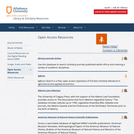
A guide to Open Access Resources consisting of scholarly journals, student dissertations, legal repositories, scientific publications and more.
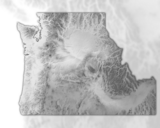
This 2018 edition is the first to be released in a digital, fully-interactive format, designed to highlight facets of the Pacific Northwest landscape with novel approaches to data presentation. Where previous editions of the atlas were designed to ask and answer questions, this atlas serves as a platform for the geographically curious to explore the region, providing as many critical questions as it does critical answers.
Beyond this page are maps of the familiar and the unfamiliar. Migration maps highlight human movement between the Pacific Northwest and the rest of the United States; a wildfire timeline chronicles the year-to-year spread of modern and historical fires; and the watershed guide abandons traditional political boundaries in favor of natural, hydrological borders. All data in the atlas were gathered from publically accessible sources, compiled using open-source software and coding libraries. This is an atlas designed to be open, responsive, and to satisfy the geographic curiosity of any and all interested.
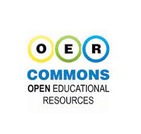
AEK'nda nasıl profil oluşturulur?
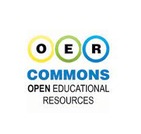
Açık Eğitim Kaynakları Profil Oluşturma
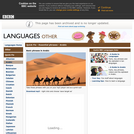
This is a list of twenty survival phrases in Arabic. They are all transliterated as well as written in Arabic script, and are meant for the very beginner. The website includes a printable page for all 20 phrases as well as a downloadable MP3 file with all of the spoken phrases. It is intended those who are going abroad to the Middle East and wish to have a survival list.
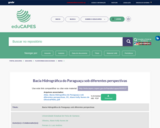
O Atlas Bacia Hidrográfica do Paraguaçu sob diferentes perspectivas, constitui um dos Produtos Técnicos Educacionais da dissertação intitulada “Percepções e mapeamento de conflitos socioambientais relativos à água nos limites da bacia hidrográfica do Paraguaçu”. O atlas tem como objetivo apresentar a Bacia Hidrográfica do Paraguaçu (BHP) a partir de proxies de conflitos socioambientais registrados em seu território, por meio de uma perspectiva multidisciplinar e interdisciplinar, sob diferentes aspectos.

Backend Development Tools and Technologies
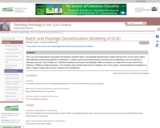
This is an Excel spreadsheet and graph that illustrates standard "batch" and Rayleigh decarbonation models and how they can be used to detect fluid infiltration during metamorphism of carbonates. It makes a good lecture demonstration, but with a few modifications can be turned into a laboratory exercise. Key variables are "hotlinked" directly into the batch and Rayleigh models so students can adjust them to get a feel for the influence of different model parameters. The included carbon isotope data are from marbles in the Jervois region, central Australia (Cartwright et al., 1997). Oxygen isotope data are also included in the spreadsheet.
(Note: this resource was added to OER Commons as part of a batch upload of over 2,200 records. If you notice an issue with the quality of the metadata, please let us know by using the 'report' button and we will flag it for consideration.)

This OLogy activity shows kids that there are simple, but very helpful things they can do to protect the ocean, even if they live nowhere near the water. It has a checklist of 14 ways kids can be ocean helpers that includes asking for tap water instead of bottled water and leaving plants and animals where they find them. For each of the checklist items, kids can check either "I am doing this" or "I could do this."
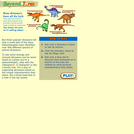
This fun Web site is part of OLogy, where kids can collect virtual trading cards and create projects with them. Here, they learn about cladograms and the vast variety of dinosaurs that once roamed Earth. The activity opens by telling kids that there are more than 400 known species of extinct dinosaurs and by explaining how cladograms show their relationships to one another. Students then go to an interactive cladogram that has 19 dinosaur species. Each of the 19 dinosaurs includes a trading card with details about the species and its discovery, photographs, and interactive multiple-choice and "Fact or Fiction?" quizzes.
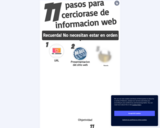
Infografía acerca de la búsqueda de bibliografía mediante medios digitales. Esta información se complementa con infografía "Motores de búsqueda".
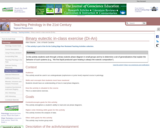
In this activity students work through a binary eutectic phase diagram in small groups and try to determine a set of generalizations that explain the behavior of such systems (e.g., "the first liquid produced upon heating is always the eutectic composition").
(Note: this resource was added to OER Commons as part of a batch upload of over 2,200 records. If you notice an issue with the quality of the metadata, please let us know by using the 'report' button and we will flag it for consideration.)
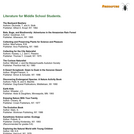
This reference list has more than 30 kid-friendly books on biodiversity. For each title, the author, publisher, and publication date are given. The diverse list includes field guides for identifying plants and insects, hands-on nature experiments and activities, photographic looks at the world's diverse species, and handbooks with tips about collecting and preserving specimens.

This diverse list of 13 multimedia resources can help you enhance the study of biodiversity in your classroom. For each resource, ordering information is provided. The list is divided into five categories: videos, magazines, posters, audio tapes, and other kits, units, and projects

Produced by the Center for Biodiversity and Conservation, this brief guide summarizes for policymakers the consequences of biodiversity loss for human health, including threats to global supplies of food and fresh water, exposure to formerly rare diseases and opportunistic infections, and loss of important sources of medicines. The guide can be downloaded as a pdf at no charge.
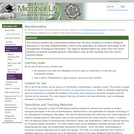
This exercise contains two interrelated modules that introduce students to modern biological techniques in the area of Bioinformatics, which is the application of computer technology to the management of biological information. The need for Bioinformatics has arisen from the recent explosion of publicly available genomic information, such as that resulting from the Human Genome Project.
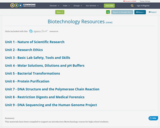
This materials have been compiled to support an introductory Biotechnology course for high school students.

The purpose of this resource is to quantitatively evaluate the accuracy of a classification system. Students sort birds into three possible classes based on each bird's beak: carnivores, herbivores, and omnivores. Students compare their answers with a given set of validation data.
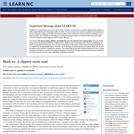
In this lesson students investigate the effects of black carbon on arctic warming and are introduced to a mechanism of arctic warming that is not directly dependent on greenhouse gases in the atmosphere: black carbon deposition on Arctic snow and ice. It can also be used to introduce the concept of albedo. Prerequisite knowledge: students understand the concepts of absorption and reflection of light energy. This lesson is designed to be used with either an Earth/environmental science or chemistry curriculum. It may also be used as an enrichment activity in physics or physical science during a unit on energy. Includes suggested modifications for students with special needs and low technology option. Requires advance preparation, including freezing ice samples overnight.